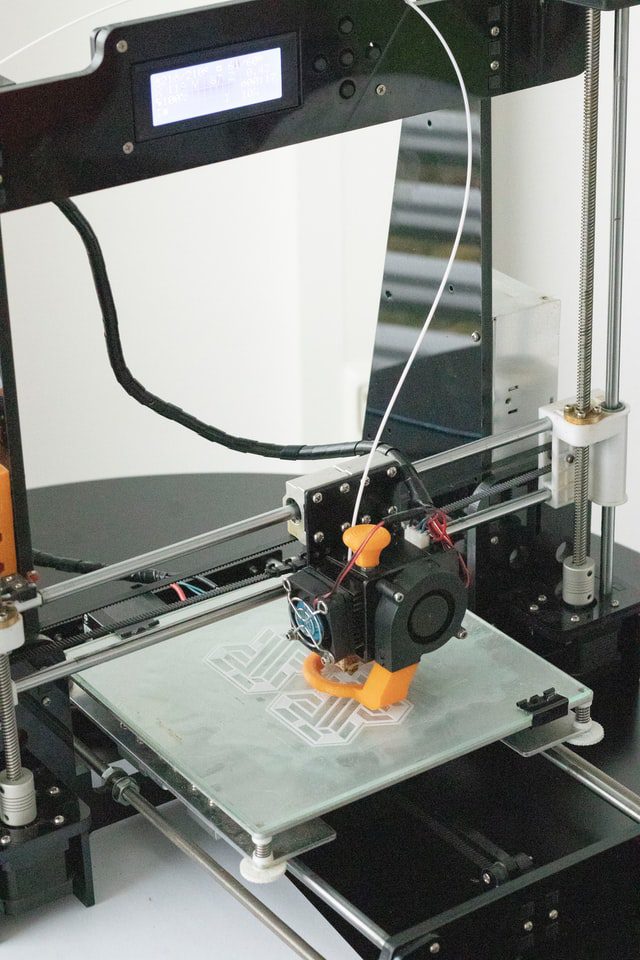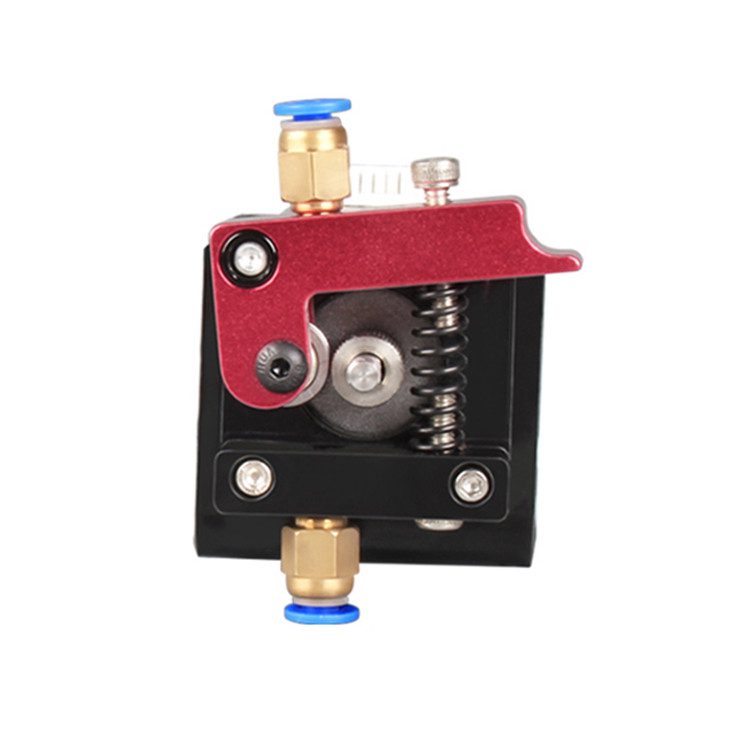Table of Contents:
Enjoying 3D printing does not require detailed knowledge of the construction of 3D printers from their users. However, it is worth learning at least the basics and lighten up a bit on all those mysterious elements that are in these machines. Today, the extruder, the little heart of a 3D printer. Let’s take a look at what it is responsible for and what it is used for.
How is 3D printing done?
For most makers and hobbyists, 3D printing comes to mind in one way: they see stationary machines, usually not that big at all, that use a process of incremental manufacturing technology known as Fused Deposition Modeling (FDM) or Fused Filament Fabrication (FFF) – depending on who you ask, because the two acronyms mean practically the same thing.
In a nutshell, the FDM method involves inserting a thread of a plastic material (filament) into a hot block of metal with a nozzle. The filament then melts and the motions of the printer position it into the desired contour. This path is repeated and stacked progressively until a full 3D object is created. But this is something all Botland blog readers and 3D printer owners know.

How does the extruder in a 3D printer work?
The processing of the material – melting it and “spitting” it out to create the desired model – takes place in a group of parts that for some are known collectively as the extruder. Without it, making prints would not be possible. And while mechanically it’s not that complicated, it’s worth knowing that the 3D printer has other parts that make it possible to extrude the filament.

To begin with – there are two schools of thought. According to some, an extruder is just the motor and associated parts that push and pull the filament. Others consider an extruder to be the entire assembly of components, including the hot end where the 3D printing filament is melted down and settled.
Let’s look at the extruder comprehensively – as a kit, or set of specialised 3D printer components. Explaining how an extruder works requires a close look at two key parts commonly referred to as the hot end (encountered notations: hotend, hot-end) and the cold end. These are the hot end and the cold end.
Chill-out and print. Extruder and a cold end
The cold end refers to the top part of the 3D printer extruder system where the filament is fed and passed to the hot end (the bottom part of the extruder system) to melt and extrude the filament so that it can go to the print bed – this is the basis for our design, the 3D printer work area.
This component of the 3D printer extruder usually consists of:
- a stepper motor, which makes the movement of the filament possible,
- a cylinder head screw or gear mounted on the motor shaft, which transmits the movement,
- a spring-loaded gear that maintains pressure on the filament,
- a PTFE tube, which guides the filament to its destination.
The actual placement and position depends on what type of extruder you are dealing with, more specifically whether it is a direct or Bowden extruder. Cold end may have gears mounted either to the printer frame or to the printhead itself – again depending on the type of extruder. Additionally, the extruder may have the aforementioned PTFE tubes leading the filament to the hot end (in the case of a Bowden extruder, which is mounted on the printer frame).
An important part in 3D printing – the stepper motor
This is a good place for an interlude before we move on to the hotend. The modestly mentioned stepper motor drives the movement and extrusion of the filament in most, if not all modern 3D printers. Understanding stepper motors is not only the absolute basics of 3D printing, but also the foundation of knowledge in assembly electronics, consumer electronics and more.
A stepper motor is a kind of brushless motor, but under this name are known primarily DC motors designated as BLDC, and similar designs in the form of permanent magnet synchronous machines that are powered by AC voltage. Another difference is the design of the rotor. In an ordinary DC motor, rotational motion is created by the interaction of the magnetic field of the permanent magnet (stator) with the magnetic field of the electromagnet (rotor) derived from the current in its windings.
3D printing done hot or naught, i.e. extruder and hot end
The anatomy of the hotend is an important issue in 3D printing. The hotend is a component integral to the construction of 3D printers. Interestingly, unlike many other components, the HotEnd is unlikely to be printed – a note of caution for those who… build a 3D printer from 3D printing. The component heats up a lot, which means it can’t be made from mere stuff.
In the heating zone of the extruder there are:
- a heating block with a heater, which is our hot end. It creates a channel for feeding the filament,
- a nozzle, the last working element of a 3D printer. Metal or from a suitable alloy (often copper or brass), solid, resistant to high temperatures. It places the heated filament on the working platform.
Extruder operation and construction – common types
- Standard extruder – the knurl is on the motor axis. Less accurate than its brothers. It may happen that the filament will “jump” over the teeth on the knurl.
- Extruder with a pinion – the motor axis is connected to the pinion and not to the knurl as in the case of its predecessor – the knurl itself is located on a different pinion. More torque, which translates into a more stable pushing of the filament.
- Double toothed extruder – the sprocket on the motor axis transfers motion (or rather: force) to the other sprocket. This makes room for another sprocket instead of a bearing to hold the filament. So the material is moved from both sides – such extruder has the legendary Prusa i3 MK3 available at Botland.
Not so complicated 3D printer, as they paint it. We have presented the basic knowledge today – take a look at us, and we will think together about the choice or possible problems with the extruder.
How useful was this post?
Click on a star to rate it!
Average rating 5 / 5. Vote count: 1
No votes so far! Be the first to rate this post.



















